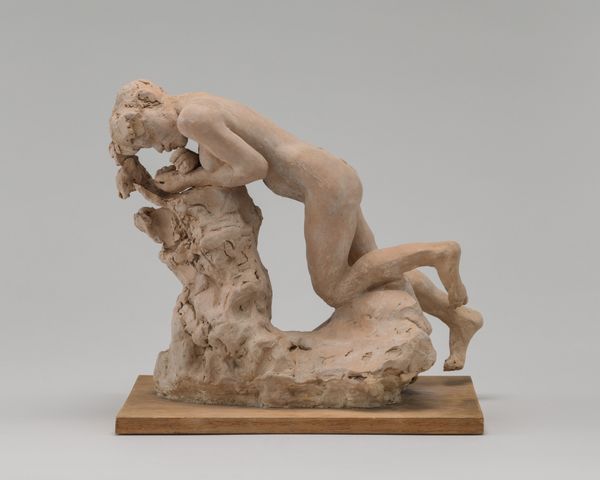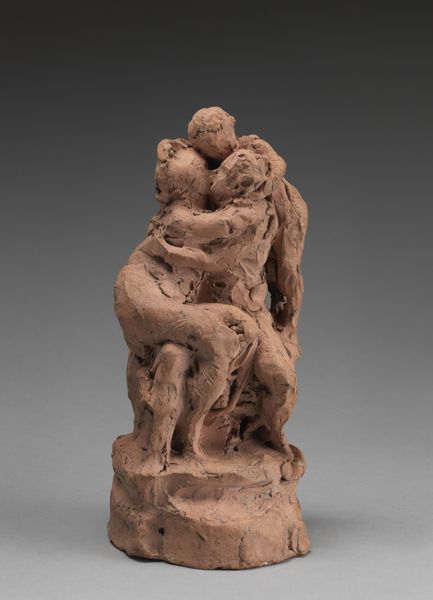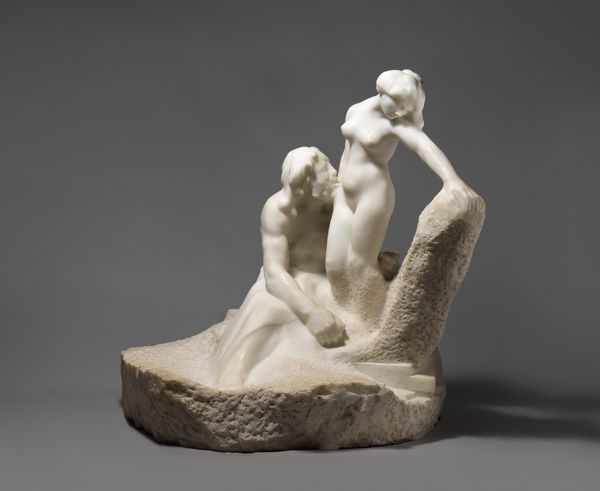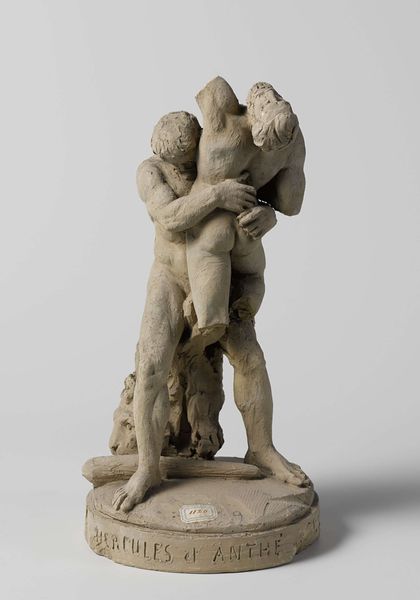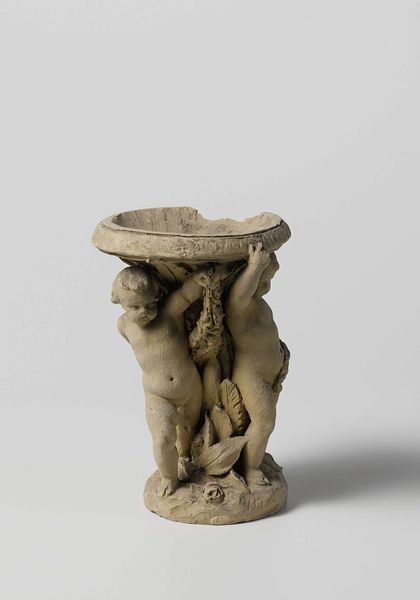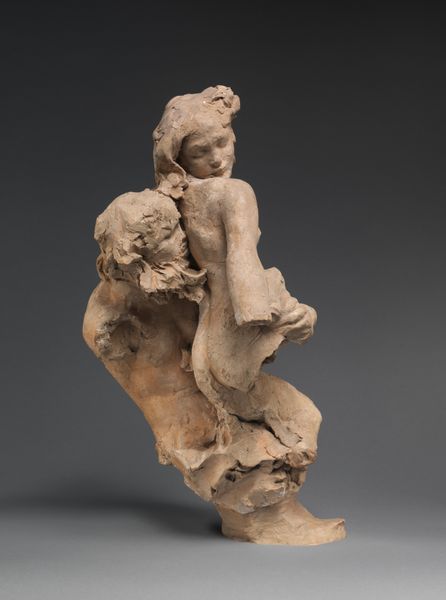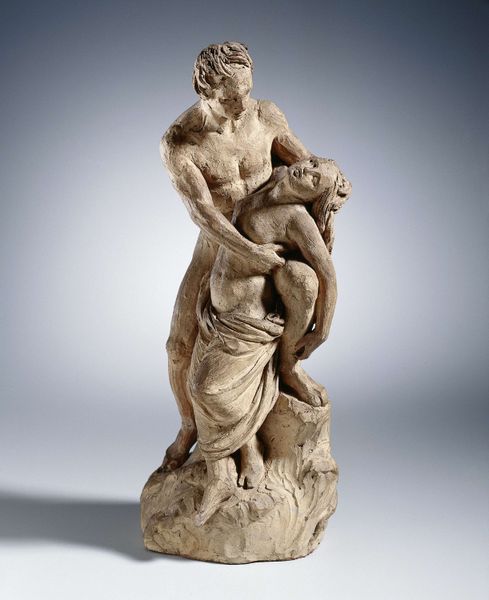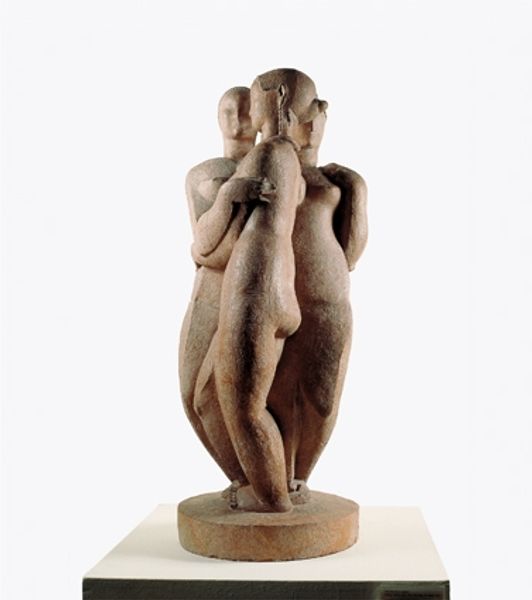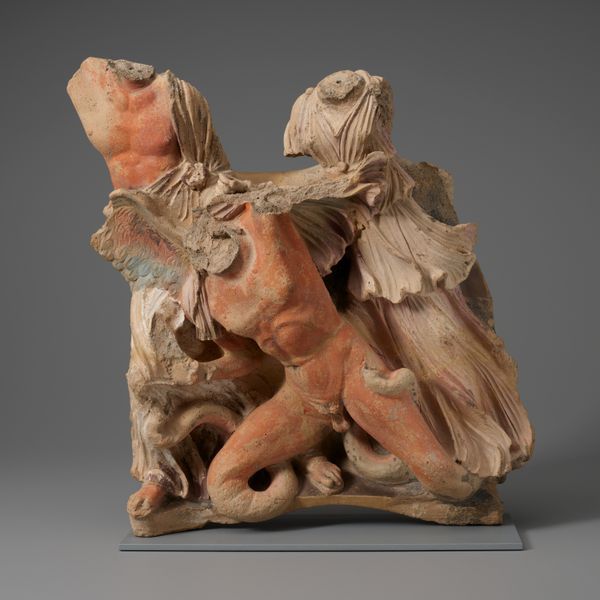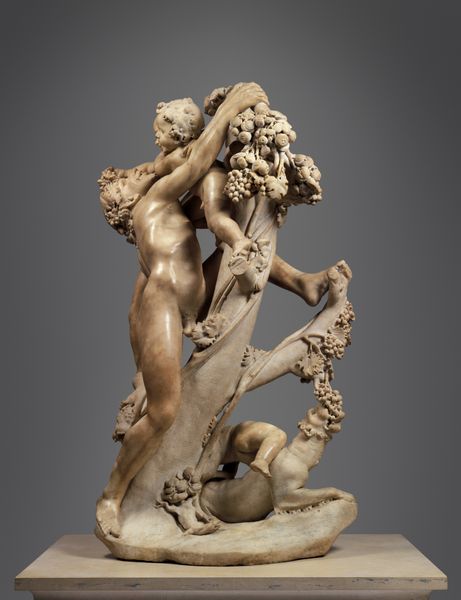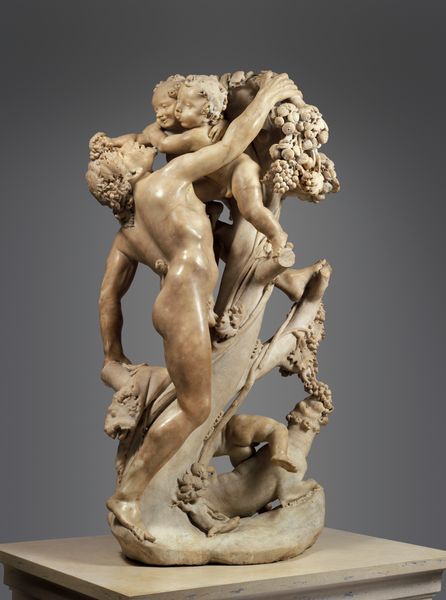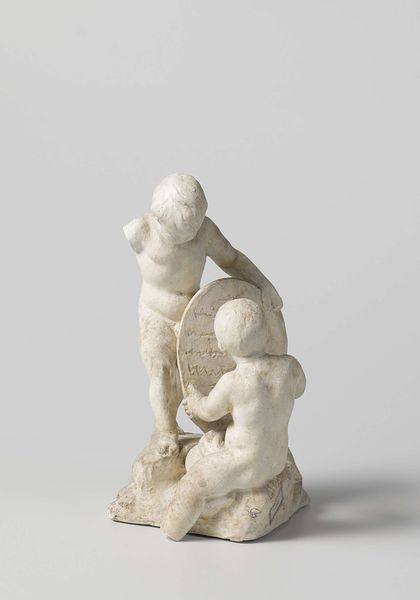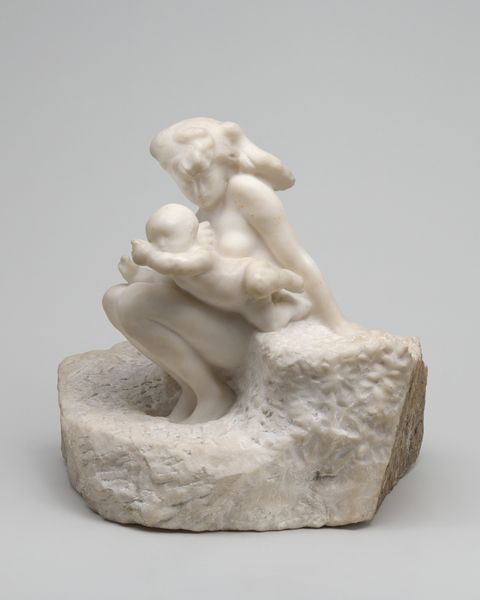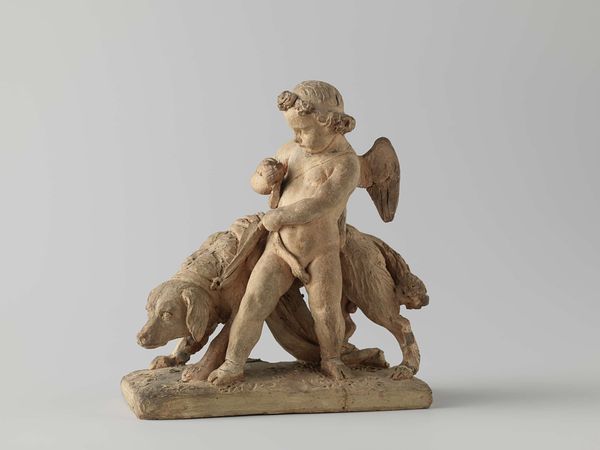
The Cog Boat Borne by Mercury, Hercules, Minerva and Neptune c. 1651 - 1652
0:00
0:00
artusiquellinus
Rijksmuseum
sculpture
#
baroque
#
sculpture
#
figuration
#
sculpture
#
history-painting
Dimensions: height 31.7 cm, width 29.5 cm, depth 24 cm
Copyright: Rijks Museum: Open Domain
Editor: This terracotta sculpture, "The Cog Boat Borne by Mercury, Hercules, Minerva and Neptune," was created around 1651-1652 by Artus Quellinus. The figures strain beneath the weight of what appears to be a large boat or vessel. What do you make of this work? Curator: The overwhelming visual language speaks volumes about power, doesn't it? We see these classical figures, divinities themselves, burdened. Consider the socio-political context: the Dutch Republic's burgeoning maritime power and its dependence on both mythology and mercantile prowess. This sculpture encapsulates a historical shift – from reliance on divine intervention towards recognizing the labor and burdens of colonial trade. Editor: So, you’re saying it’s not just a celebration of mythology, but a commentary on the cost of empire? Curator: Exactly. Who benefits, and at what expense? This sculpture almost satirizes the glorification of trade by making those seemingly powerful figures burdened. Where do you see the labor implied here? Editor: Well, there is their positioning: Neptune, Hercules, Minerva, and Mercury bear all the burden. Curator: They are the visual representation of state ideologies supporting colonial and trade agendas. Quellinus invites us to examine the ethics and responsibility intertwined with this power, subtly critiquing the period's imperialistic ambitions. It encourages critical examination, moving beyond celebratory narratives of state and economy to address the lived realities and obscured violence that form an empire. Editor: That’s a really interesting way to view what I initially perceived as a purely historical artwork! It really connects the past to issues that still persist today, and it forces us to confront difficult conversations that help reveal empire's complexities.
Comments
rijksmuseum about 2 years ago
⋮
Visible traces of the sculptor can be discerned in this freely modelled bozzetto (clay sketch) for the crowning element of a pump: fingerprints, sharp, deep grooves and tiny holes made by the sculpting tools to suggest depth, and short parallel lines from a serrated spatula to enliven the surface. These accents are comparable to hatching in drawings.
Join the conversation
Join millions of artists and users on Artera today and experience the ultimate creative platform.
